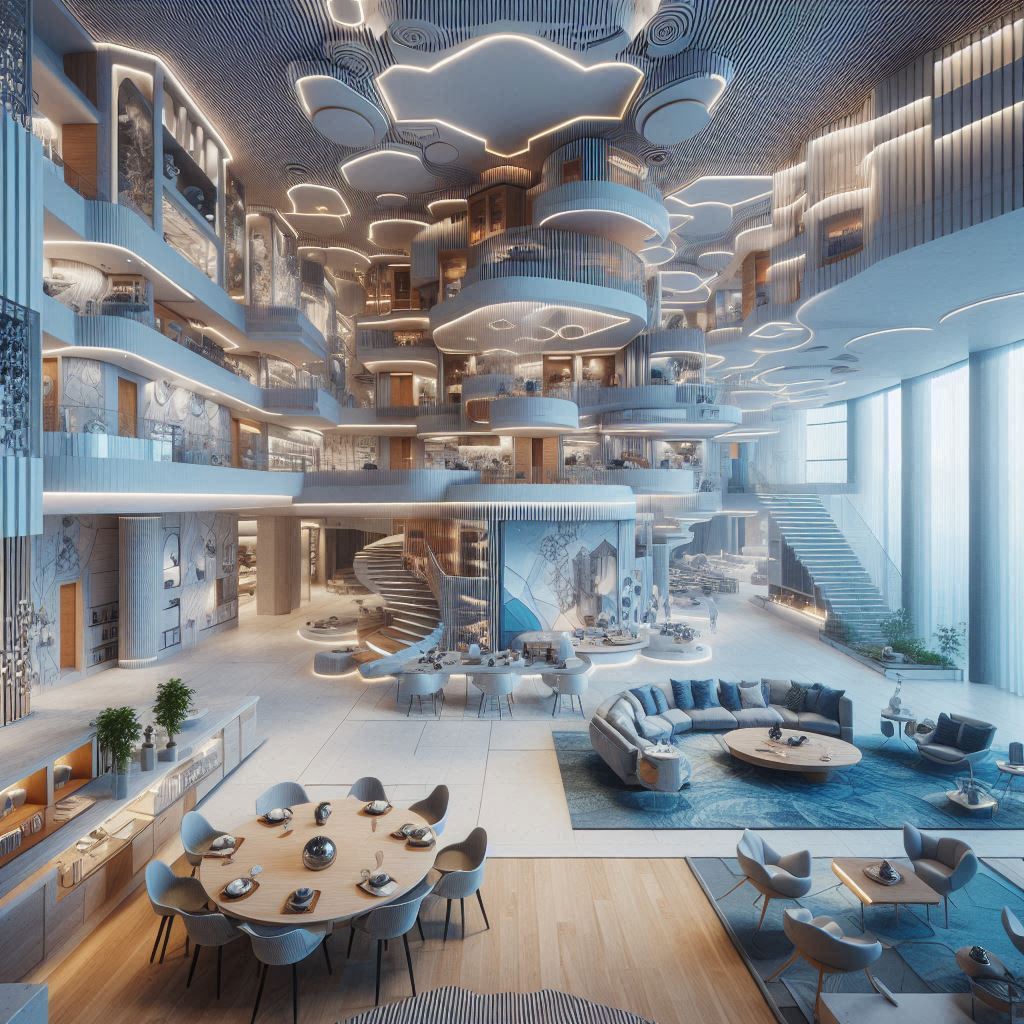In the realm of digital architecture, the concept of digital twins has gained prominence. These virtual replicas mirror real-world objects, processes, environments, or systems in real time. As the AEC (architecture, engineering, and construction) industry embraces digital transformation, custom parametric families emerge as a powerful tool.
Understanding Custom Parametric Families
Custom parametric families are versatile building components created using parametric modeling tools (such as Revit). These families adapt to specific project requirements, offering flexibility and accuracy. Examples include adaptive curtain walls, bespoke structural elements, and MEP (mechanical, electrical, plumbing) components.
Benefits of Customization
- Optimized Design: Custom families allow architects and engineers to fine-tune elements precisely.
- Efficient Project Delivery: By reusing customized families, project timelines improve.
- Enhanced Collaboration: Teams can collaborate seamlessly using standardized components.
Challenges and Considerations
1. Balancing Flexibility and Performance
Creating custom parametric families involves striking a delicate balance between flexibility and performance. Here are some key considerations:
- Parameterization: Custom families should have adjustable parameters to accommodate various design scenarios. However, too many parameters can lead to complexity and performance bottlenecks.
- Constraints: Defining constraints ensures that custom families behave predictably. However, overly restrictive constraints may limit their adaptability.
- Interoperability: Custom families must seamlessly integrate with other BIM (Building Information Modeling) components. Ensuring compatibility across software platforms is crucial.
2. Maintenance and Version Control
Maintaining custom parametric families over time presents challenges:
- Consistency: Consistent naming conventions, parameterization, and documentation are essential for long-term usability.
- Updates: As projects evolve, custom families may require updates. Managing these changes across multiple projects can be daunting.
- Versioning: Tracking versions and ensuring backward compatibility is critical, especially in collaborative environments.
Applications in Digital Twins
1. Role of Custom Parametric Families
In the context of digital twin models, custom parametric families play several crucial roles:
- Accurate Representation: Custom families enhance the fidelity of digital twins by providing detailed representations of building components. Whether it’s a unique facade panel or a specialized HVAC duct, custom families ensure accuracy.
- Building Performance Simulations: Integrating custom families into simulation software allows architects and engineers to analyze various scenarios. For instance, thermal simulations can assess energy efficiency based on custom window families.
2. Facility Management and Predictive Maintenance
Digital twins extend beyond design and construction phases. During facility management, custom parametric families facilitate:
- Space Utilization: Tracking occupancy, furniture layouts, and equipment placement using custom families.
- Maintenance Scheduling: Predictive maintenance relies on accurate representations of building elements. Custom families aid in scheduling inspections and repairs.
Leveraging BIM Data
Custom parametric families leverage BIM data, ensuring consistency across the entire project lifecycle. Architects, contractors, and facility managers benefit from a shared understanding of building components.
Emerging Technologies and Best Practices
1. AI-Driven Customization
As artificial intelligence (AI) continues to advance, we can expect AI-driven customization of parametric families. Machine learning algorithms can analyze project data, user preferences, and performance metrics to generate optimized families.
2. Generative Design
Generative design tools, such as Autodesk’s Dynamo, empower architects and engineers to explore countless design variations. These tools create parametric families based on defined constraints, pushing the boundaries of creativity and efficiency.
3. Cloud Collaboration
Cloud-based collaboration platforms facilitate seamless sharing of custom families across teams and projects. Real-time updates, version control, and access from any location enhance productivity.
Future Trends and Beyond
1. Digital Fabrication and 3D Printing
Custom parametric families are closely tied to the physical world. As digital fabrication techniques advance, we’ll see more integration between parametric models and 3D printing. Imagine custom structural elements fabricated on-site based on precise parametric designs.
2. Real-Time Collaboration in AR/VR
Augmented reality (AR) and virtual reality (VR) environments will enable real-time collaboration using custom families. Architects, engineers, and stakeholders can interact with parametric models, making informed decisions during design reviews.
3. Ethical Considerations
As we embrace customization, ethical questions arise. How do we balance individual creativity with standardized components? How can we ensure accessibility and inclusivity in custom designs? These discussions will shape the future of parametric families.
The Future of Custom Parametric Families
1. Sustainability and Circular Design
As the world focuses on sustainability, custom parametric families will play a pivotal role. Architects and engineers will design for disassembly, reuse, and recycling. Parametric models will optimize material usage and energy efficiency, contributing to a circular economy.
2. Human-Centric Design
Customization isn’t just about technical parameters; it’s about creating spaces that enhance human well-being. Expect parametric families to evolve with a focus on ergonomics, accessibility, and emotional impact.
3. Cross-Disciplinary Collaboration
The future lies in collaboration across disciplines. Custom parametric families will seamlessly integrate with urban planning, landscape architecture, and even social sciences. Imagine a holistic approach where design decisions consider cultural context, community needs, and environmental impact.
Ethical Considerations and Inclusivity
1. Balancing Customization and Standardization
As we embrace custom parametric families, we must strike a balance. While customization empowers creativity, standardized components ensure consistency and interoperability. Architects and engineers should consider both aspects to create harmonious designs.
2. Inclusivity and Accessibility
Customization should not exclude anyone. Parametric families must accommodate diverse needs, including those related to mobility, sensory perception, and cultural preferences. Universal design principles ensure that spaces are accessible and welcoming for all.
3. Environmental Impact
Customization affects material choices and resource consumption. Sustainable practices—such as using recycled materials, minimizing waste, and optimizing energy efficiency—should guide parametric family design.
Custom parametric families are not static entities; they evolve alongside technology, industry needs, and societal values. As architects, engineers, and designers, we have the responsibility to shape their trajectory.
We Don’t Just Design Buildings; We Engineer Landmarks that Stand the Test of Time.
Let’em Know !
Share with friends and family.

